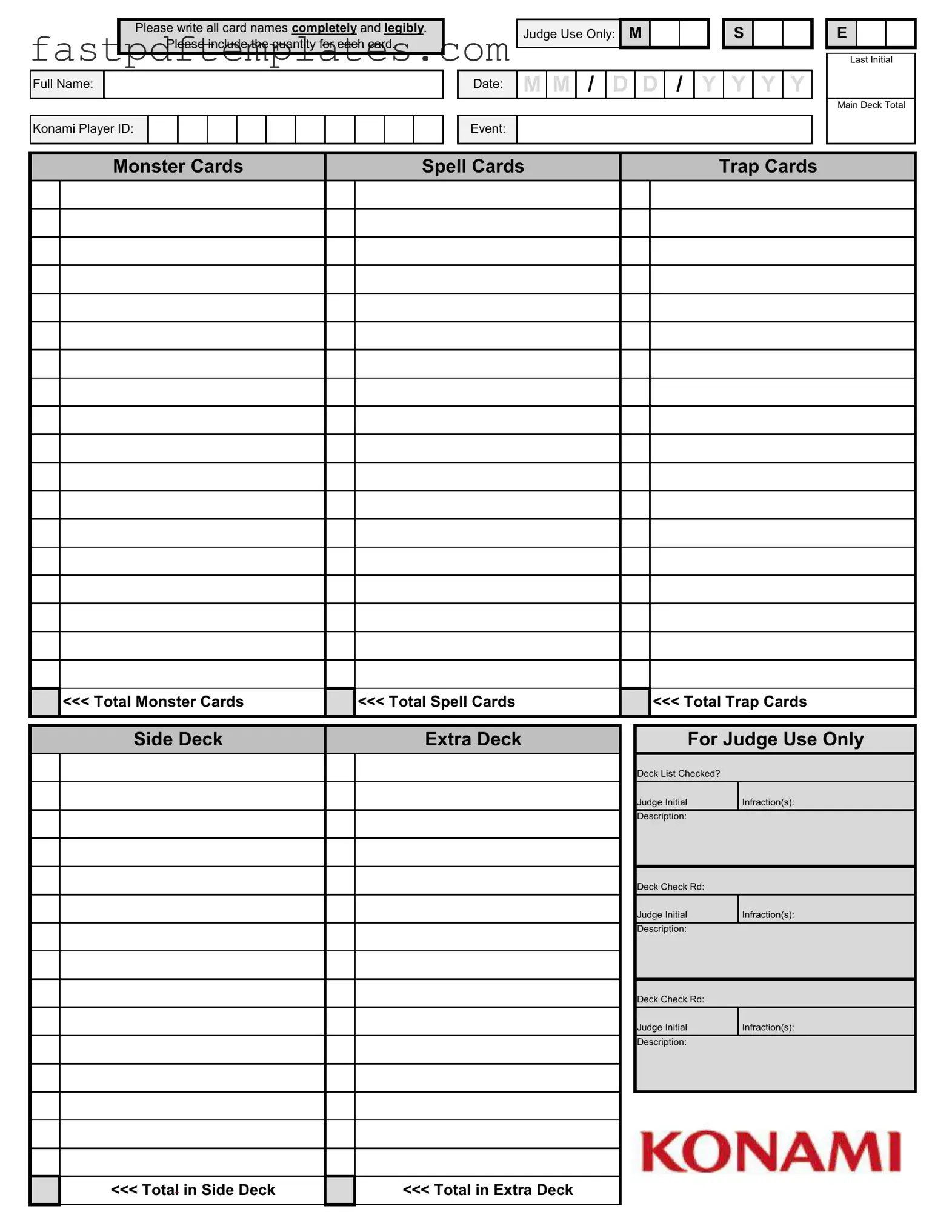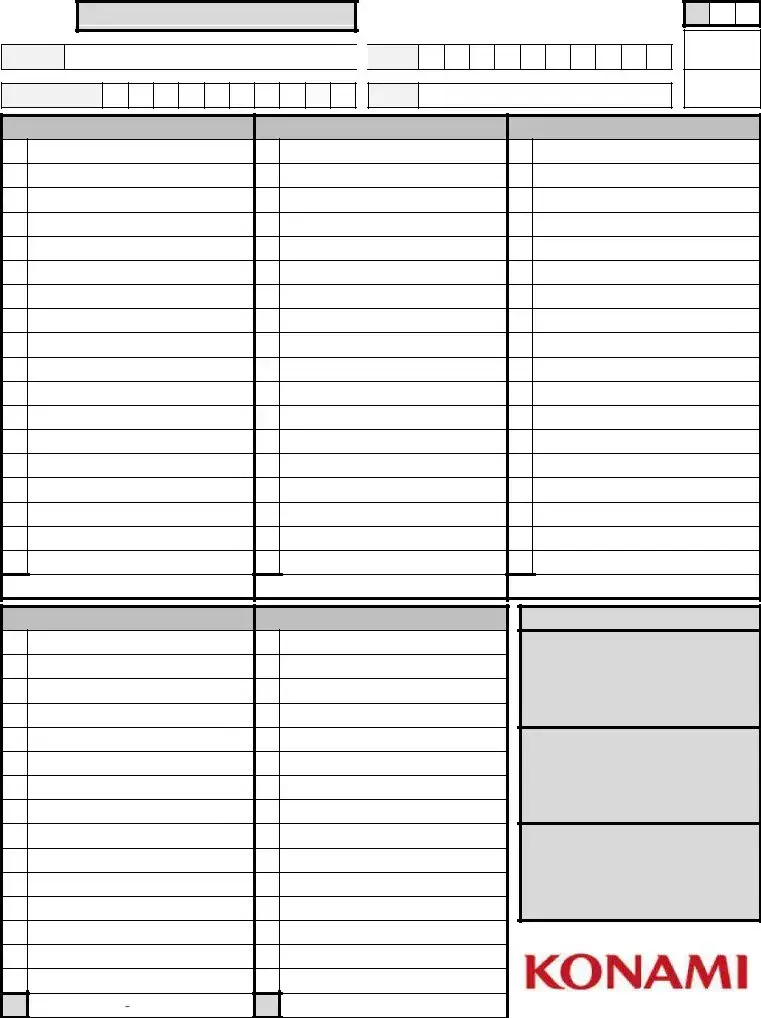The Konami Decklist form shares similarities with a tournament registration form. Both documents require participants to provide personal information, such as their full name and identification number. Each form serves to verify the identity of the player and ensure they are eligible to compete. Additionally, both forms often include sections for judges to note any infractions or issues that arise during the event, maintaining a record for accountability.
Another document akin to the Konami Decklist is the player score sheet. This sheet tracks the performance of each participant throughout the event. Similar to the decklist, it requires clear documentation of player actions and results. Both documents are essential for maintaining order during competitions and ensuring that all players adhere to the rules and regulations set forth by the organizing body.
The event waiver form also bears resemblance to the Konami Decklist. Participants must sign a waiver to acknowledge their understanding of the event rules and the risks involved. Like the decklist, this document collects personal information and may include sections for judges to record any incidents or infractions. Both forms are crucial for safeguarding the interests of both the organizers and the players.
The scorecard used in card games is another document similar to the Konami Decklist. Scorecards keep track of game scores and outcomes, much like how the decklist records the composition of a player's deck. Both documents require accurate and legible entries to ensure fair play and proper record-keeping during tournaments.
A match result slip is also comparable to the Konami Decklist. This slip is filled out after each match to document the winner and loser. Like the decklist, it requires clear writing and may involve judges verifying the results. Both documents serve to provide a transparent record of the event and support the overall integrity of the tournament.
The player registration form is another document that shares characteristics with the Konami Decklist. This form collects essential information about participants before the event begins. Both documents require personal details and may include sections for judges to note any relevant information or infractions, ensuring a smooth and organized event.
The rules acknowledgment form is similar to the Konami Decklist in that it requires participants to confirm their understanding of the game rules. This form, like the decklist, ensures that all players are aware of the regulations and expectations. Both documents play a role in promoting fair play and compliance during the tournament.
The tournament feedback form also resembles the Konami Decklist. While the decklist focuses on player decks, the feedback form collects players' opinions on the event. Both documents aim to improve future tournaments by gathering information on player experiences and any issues encountered during the competition.
The incident report form is another document that shares similarities with the Konami Decklist. This form is used to document any disputes or rule violations that occur during the event. Like the decklist, it requires detailed information to ensure clarity and accountability. Both documents are vital for maintaining a fair and organized tournament environment.
Lastly, the event schedule can be compared to the Konami Decklist. The schedule outlines the timing of matches and rounds, helping participants manage their time effectively. Both documents contribute to the overall structure of the event, ensuring that players are informed and prepared for their matches.




 <<< Total Monster Cards
<<< Total Monster Cards <<< Total Spell Cards
<<< Total Spell Cards <<< Total Trap Cards
<<< Total Trap Cards